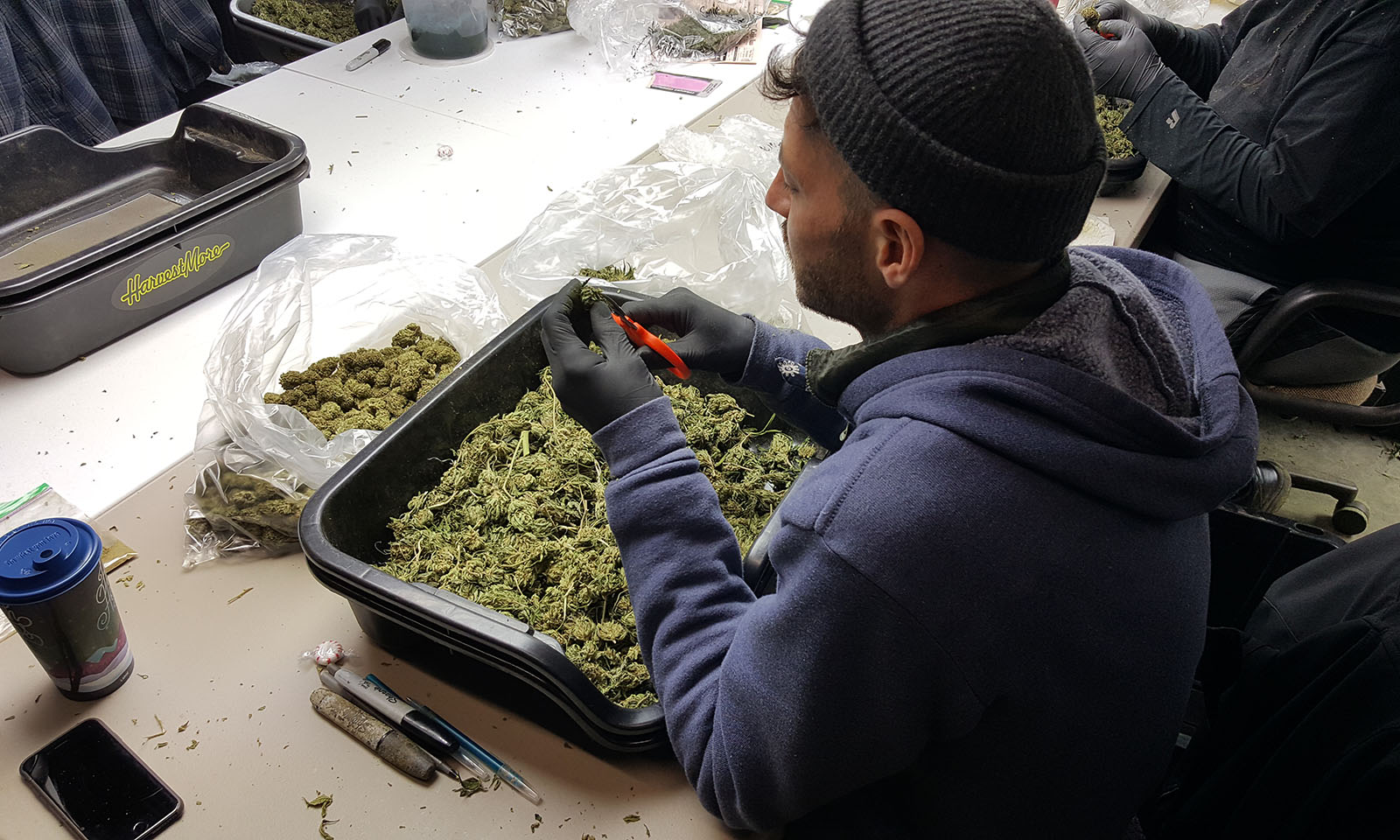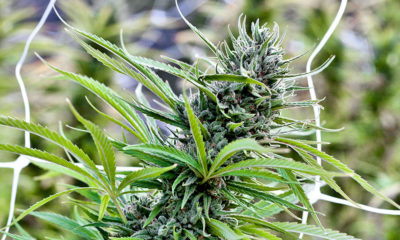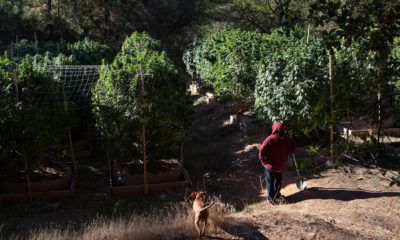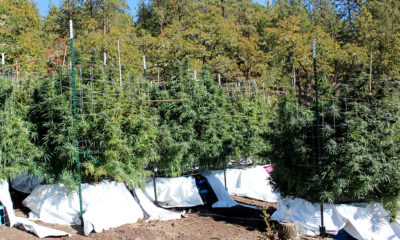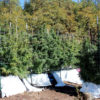The Plight of the Trimmigrant
A job trimming cannabis used to include obligatory smoke breaks, farm parties and blood buds. Now, recreational regulations have turned a trimmigrant’s life into background checks, workplace insurance and payroll taxes.
The prospect of easy off-the-books money brings thousands of migrant workers from around the globe to the West Coast every year to harvest cannabis. Tales of big plants, big wages, communal living and wild farm parties attract the masses, but the life of a trimmigrant is far from glamorous. The reality often includes spending months camping in the cold, trimming in dimly lit barns, going long spells without showers and dealing with employers that never pay. In the case of the farmer, the trimmigrant help can be just as difficult to deal with. Grungy drifters with dogs, thieves and dramatic personalities follow trim scenes like flies. However, while commercial cannabis is here to stay, the trimmigrant’s days may be a thing of the past.
West Coast weed farming has gone mainstream. What was once a fringe enterprise is now out in the open. Growers are no longer restricted to secluded mountaintops, back bedrooms or dilapidated warehouses. Taxation, regulation and transparency are the new norms, and the traditional cannabis farm is already in full transformation.
I recently sat down with Michael Horner inside a shiny new trim and curing facility at Bishop Orchards, a licensed producer in Southern Oregon. Horner, who labels himself a longtime cannabis cultivator, activist and consultant, is CEO of Advanced Management Group. AMG manages four licensed recreational farms in the state and employs over 20 full-time workers, as well as an equal number of temporary hires.
Our conversation begins after I sign into a visitor log and slap on my trusty badge to separate myself from the employees. Horner informs me proudly that the building we are in is over 5,000 square feet and constructed specifically for cannabis. My tour begins in the trim room, lit by bank after bank of bright fluorescent lights. Each trimmer is wearing gloves and snipping over specially designed bins for comfort and pollen collection. The crew is focused and hardly acknowledges my presence. We continue on through eight large dry rooms, and eventually into an office where I can see each of the facility’s 20 or so live security camera feeds playing on a television.
The scene is a far cry from the party atmosphere that I remembered from trim camps of old. With state mandates prohibiting alcohol and cannabis consumption on-site, I can’t spot a single beer, blunt or bong in the whole facility. I watch as a manager brings finished product into the office where it is weighed and immediately entered into the Metrc tracking system. The system allows for both the producer and the state to keep tabs on production, sales and employee backgrounds. Outside, the parking lot is filled with late model cars and not a single van or tent; all employees go home at the end of their shift. Mounds of soil and t-posts are all that remains of an acre of cannabis canopy harvested a month before with not a speck of unsightly trash anywhere to be seen.
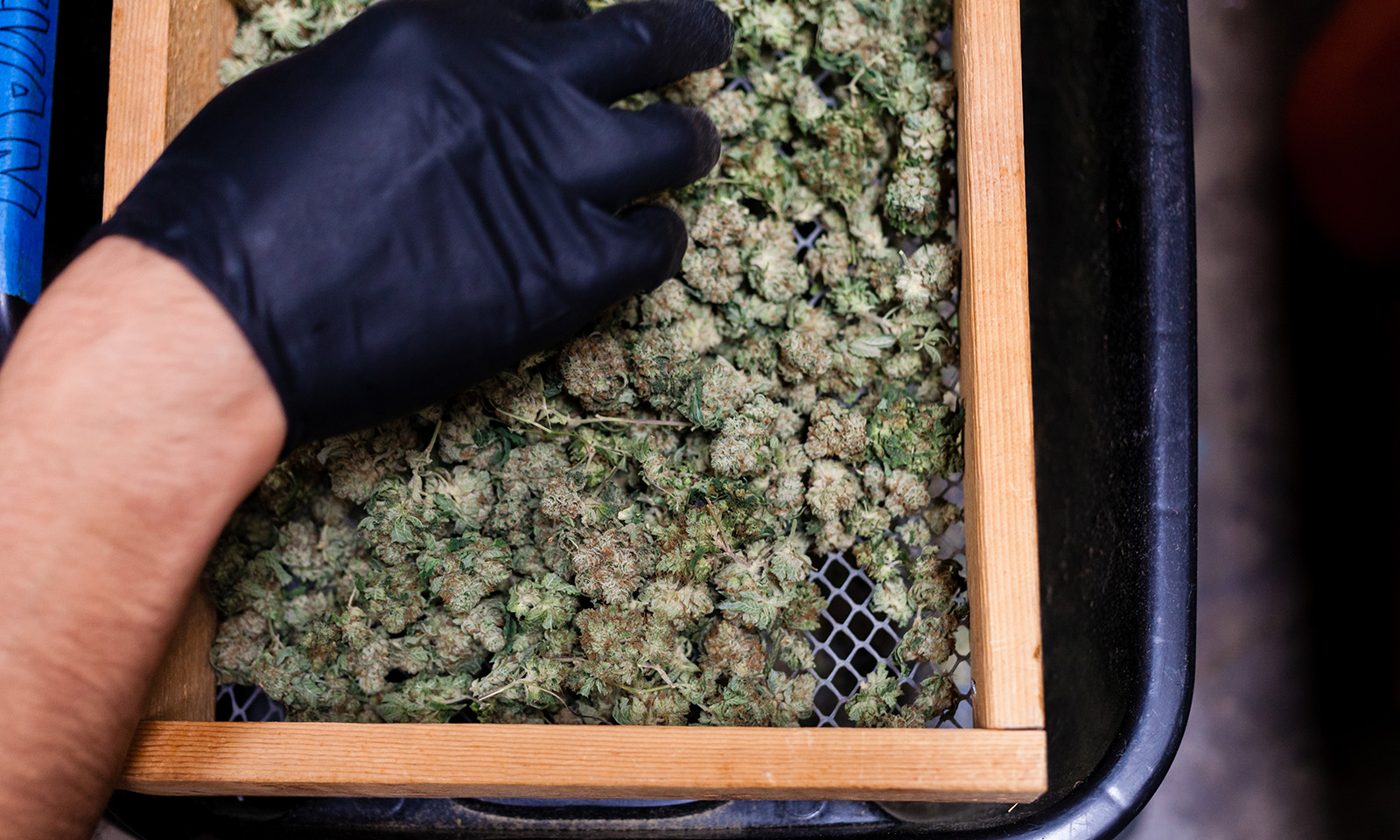
Photo Gracie Malley for Cannabis Now
“Cannabis is special, but we knew early on that we had to start treating the industry, and our employees, in the same way you would at any other workplace,” Horner says. “Things like workman’s compensation insurance, payroll taxes, security companies and drug testing have never been on the radar for cannabis growers, but they are now.”
Despite new industry headaches, Horner admits he’s been able to gather a workforce in the legal market far superior to years prior. He and his partners interview each new candidate and complete background checks before hiring. New talent, the promise of a paper trail and a wider area of broadcast have allowed the group to reach prospects previously unreachable or uninterested. They also perform pre-employment drug screening for substances other than cannabis, which he says has helped to dissuade addicts.
“In the past, you were really limited on your employee choices and they were often unemployable,” Horner jokes. “I don’t mean that in a bad way, but we would find a lot of people who couldn’t hold down a steady job, or didn’t want one.”
As our conversation continues to trim machines, employee taxes, payroll taxes, the Occupational Safety and Health Administration (OSHA) and over-priced security companies, my mind wanders back to my days as a trimmigrant. Beer drinking was encouraged and doobie breaks were obligatory. We crashed tractors, fell off ladders and tripped on trellis netting daily. When scissors cut fingers, we joked about “blood buds.” Injuries were just as common as hangovers, but trips the hospital covered in fragrant cannabis resin were deeply frowned upon. It was pretty fun though.
“We have started to put more emphasis on safety and ergonomics at our farms,” Horner says. “Not just because of insurance costs, but because we want our crew to stay with us, many of these people will go onto to have long term careers with us.”
We go into the future and of AMG, but I bring Horner back to the topic of insurance and I can sense I hit a nerve.
“So many companies denied giving us workman’s compensation insurance because of our industry that they lumped us into a high-risk category,” Horner says. “We had to pay a $9,000 deposit up front, we have bi-monthly audits and assessments and we still pay an incredibly high premium just because there is no data about the industry.”
With Horner’s solid two-minute rant on insurance during our conversation on cannabis, it hits a nerve in me too. Life on the farm is headed in a direction I never imagined. Safety, accountability and efficiency trump fun with any trade, but I still can’t shake the feeling that changes to the industry are just beginning. Fortunately, nothing can suck the joy out of growing quality cannabis.
Originally published in Issue 29 of Cannabis Now. LEARN MORE
TELL US, have you ever had a job in the cannabis industry?



